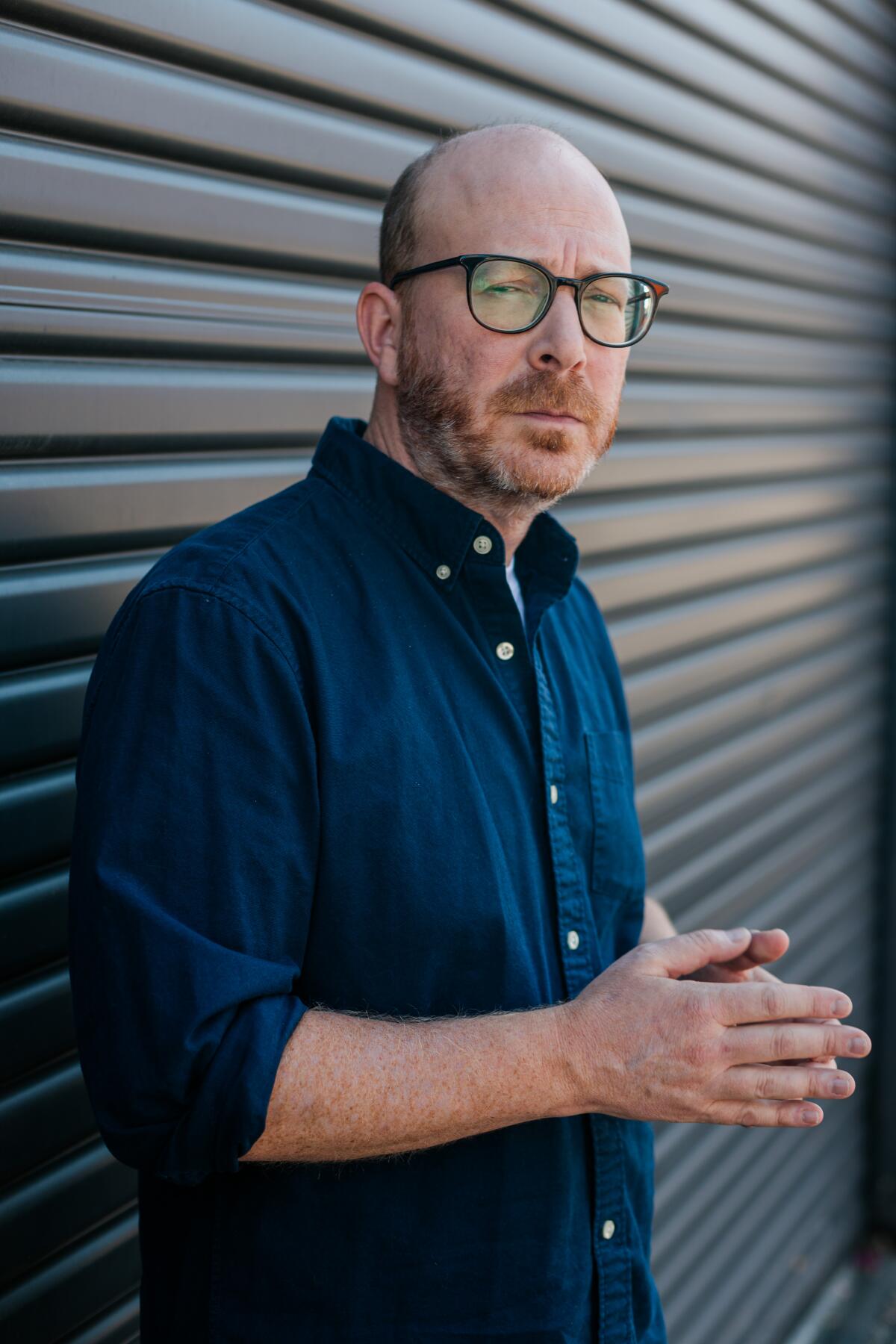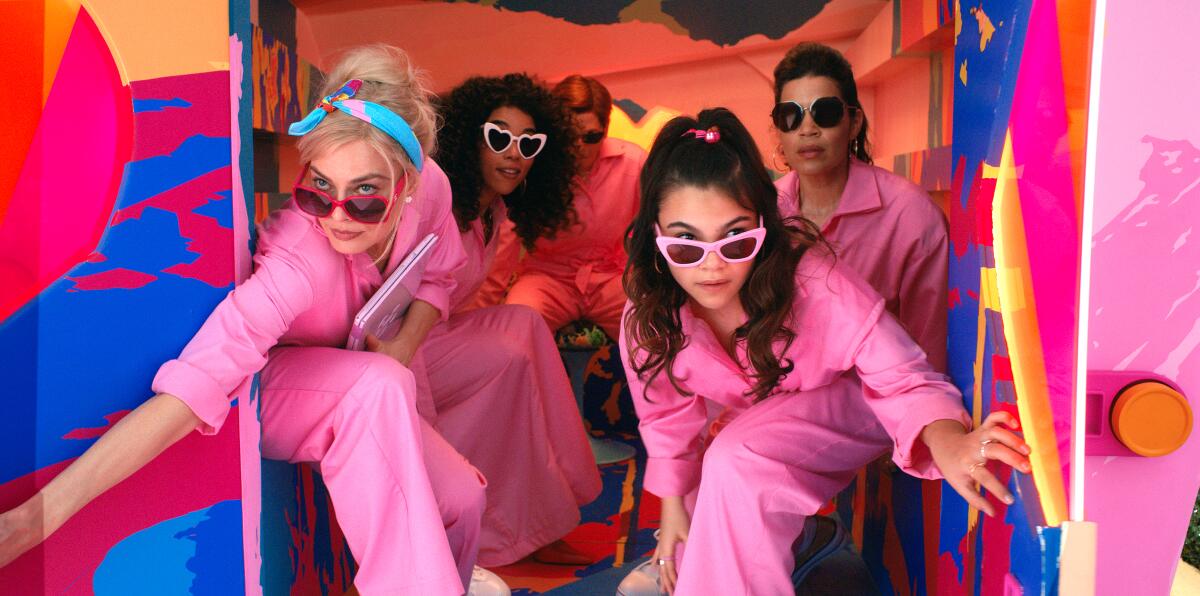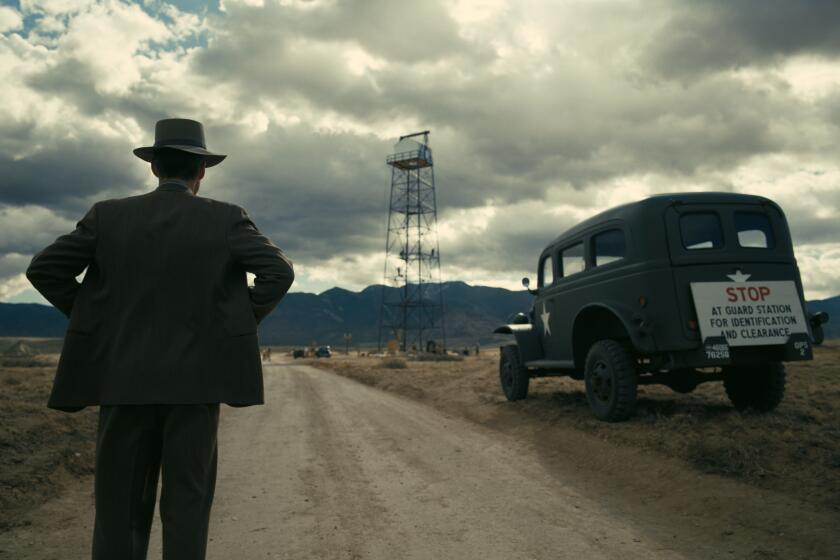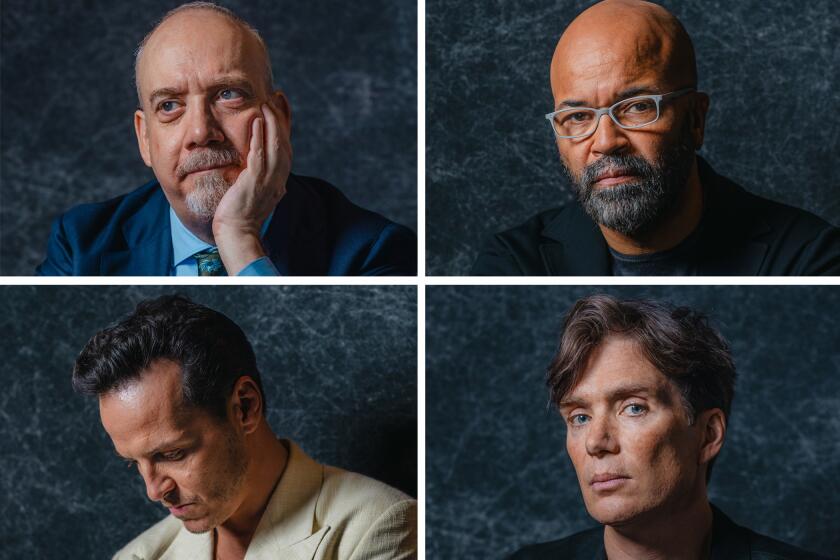‘Barbie’ editor Nick Houy on cutting America Ferrera’s now-famous speech and that tricky ‘2001’ opening

- Share via
Nick Houy edited “Lady Bird” and “Little Women,” the first two features Greta Gerwig directed solo. But “Barbie” was a whole new world — make that worlds — with its pretty pink Barbie Land and gritty L.A., Margot Robbie and Ryan Gosling leading legions of living Barbie and Ken dolls to something like human consciousness, elaborate dance sequences (Houy had never cut one before) and cultural observations that don’t stop.
Houy has been primed for this moment since childhood. His cineaste mother took him from their home in Boulder,
Colo., to Colorado Springs about 100 miles away, to an art house where they would watch French New Wave films. Houy studied moviemaking at his hometown University of Colorado, then moved to New York, where he worked his way up through postproduction houses.
Recently relocated to New Jersey with his wife, two kids and dog, Houy worked on “Barbie” for 14 months, sometimes cutting fresh footage from the production’s Barbie Land sets in London and the streets of L.A. on the same day. Every scene was finessed in post with Gerwig, co-writer Noah Baumbach and, sometimes, producer Robbie by his side.

“It was a long shoot, and we cut for quite a long time after that,” Houy said during a video interview. “Still, I think we did it in a record amount of time, considering how ambitious the film is.”
“Barbie” seamlessly goes from bubbleheaded euphoria to social commentary and existential angst. Plus production numbers! How do you keep all that coherent?
It’s being able to constantly shift tones without giving the audience too much whiplash. Part of that is just using every editorial trick in the book, sometimes slowing things down to transition into the next thing. Playing everything to make people laugh was our foremost concern, making sure that every moment is pure joy. Then pulling the rug out from under that.
Like when in the middle of her ecstatic dance party, Barbie asks “Do you ever think about dying?”
Yeah, then you’re starting to show what the movie is really about, which is this strange understanding of what it is to be human. To be able to land that for a general audience was a huge challenge but also extremely fun. A big part of it is how you play the reactions to what she said, and we had a lot of great coverage of the reactions. We had to lean into that and really hold on it for quite a while to show that we’d broken the movie in a way, that she was starting to go into something deeper than what she’d ever known — and that it wasn’t really OK. Everyone is a little concerned, at least as concerned as they can be in Barbie Land. When she snaps out of it, it was finding Margot’s perfect little moments where she’s kind of back to celebrating again, but a little worried.
I’ve heard that the work of Jacques Demy (“The Umbrellas of Cherbourg”) and stage-bound ‘50s musicals inspired the production numbers.
Greta and I always talk about those films. The “I’m Just Ken” sequence, with its pink on one side and blue on the other, it’s sort of a direct link to the dream within a dream sequence from “Singin’ in the Rain.” You start to understand it on another level of cinematic appreciation. Then it’s like “Greased Lightning” and “Singin’ in the Rain” put together, in a way that only Ken could have infused into his brain from our bizarre culture.

America Ferrera’s soliloquy about being a real woman is as impactful as the elaborate dance numbers.
She did an amazing job. It was near the end of shooting, because the Weird Barbie set took a long time to put together. Two takes were really nailing it, so it cut together very quickly and simply. We never touched it after my first cut, because it was just perfect. I explored other things on the side just to make sure of that, but all we did were these slight, subtle push-ins which hopefully you don’t notice but just feel. Then deciding what cutaways from America would bring out the emotions; there’s this great moment where Kate McKinnon as Weird Barbie is just like, “Damn, she’s right,” that look while cocking her head.
It must have been a blast to rework the opening sequence of “2001: A Space Odyssey” with little girls smashing baby dolls with their glamorous new Barbies.
Obviously, [cinematographer Rodrigo Prieto] looked at the original and replicated it in the most interesting, technical ways. It’s beautifully, perfectly done, but it’s slower than we needed it to be. Our version was making a point in a fun way by utilizing our memory of that scene. The one thing I had to make sure of was, when the ape man smashes the skull with that bone, it’s right on a specific musical note. Any time I tried to not do that, it never worked as well; Kubrick knew exactly what he was doing. Everything from there I could toy with a bit, but when the girl hits the doll with the other doll, it had to hit at the exact musical moment.
The 2024 Oscars are shaping up as a grand sequel to the summer’s “Barbenheimer” phenomenon. The question now: Which movie will earn more nominations?
What was the toughest thing to get right?
The sequence near the end where Barbie’s talking to the creator, Rhea Perlman as Ruth Handler, who’s saying, “Do you really want to become human?” Like, when you’re raising a family, you have to remember that it’s all going to end in death. That’s a pretty heavy thing to be in a “Barbie” movie or any kind of big comedy, and we wanted it to land emotionally without being too literal. So we actually imbued home videos from everyone on the crew: old Super 8 films from generations ago intertwined with iPhone vids of our kids growing up. We all got very emotional when we started doing that. Seeing my own daughter on the screen was really moving and important.
And the thing about “Barbie” you’re proudest of?
Making people laugh out loud, appreciate different things about each other, make them all cry and think about what it is to be human in a big, blockbuster IP by Warner Bros. and Mattel. The fact that you’re able to do that just through images and sound is magic.
Our BuzzMeter film experts are back to predict what Oscar voters will nominate in 10 Academy Awards categories. Vote in the online polls!
More to Read
From the Oscars to the Emmys.
Get the Envelope newsletter for exclusive awards season coverage, behind-the-scenes stories from the Envelope podcast and columnist Glenn Whipp’s must-read analysis.
You may occasionally receive promotional content from the Los Angeles Times.












